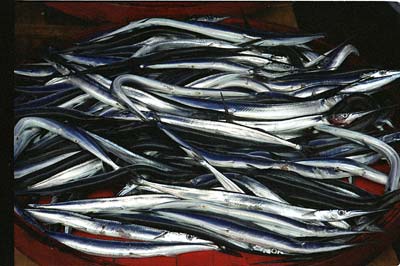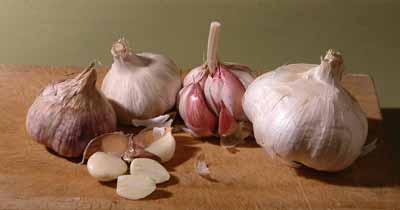
"Sea-needle." Garfish or saury. These are two very similar fish, both of which are good to eat. They are striking, beaked, marine fish up to 60 cm (2 ft) long, with a backbone which turns bright green, almost mauve, on cooking and a delicious flavour, found on most European coasts.
Beef cut. A long, thin cut from the top of the rump or flank - silverside or top rump. This is the cut the French prefer for braising, being neither too fat nor too lean. In the States this is referred to as rump roast. Can also apply to long, thin slice of meat from either side of the breast of roasted poultry, other meats, or fish.
"Little needle." A long, thin sliver of the choicest, most tender meat from either side of the breastbone of a chicken or duck. In fact, often simply means that the breast meat has been cut into strips, five is the recommended number, of the same dimensions as the true aiguillette. It also describes a beef cut from the rump or flank.
"Jellied beef aiguillettes." A long, thin cut from the top of the rump or flank of beef, cooked and set into a well-flavoured aspic and served cold.
Thin strips of breast of roasted mallard with field mushrooms and sauce of crème fraîche, duck livers and stock with brandy, red wine and demi-glace.
A spicy sausage or slice of salted meat which creates a thirst. The name was originated by Rabelais.
To acidulate. To add a drop of vinegar or lemon juice to add piquancy, sharpness or acidity to a dish. Similarly a few drops of lemon or vinegar or citric acid may be added to water to prevent discolouration of foods. Commonly used with artichokes, cut avocados, bananas and other foods which discolour rapidly on contact with the air. It also refers to the process of souring cream by the addition of lemon juice. Can also describe a strongly spiced dish.

Garlic. As garlic is often used in French cuisine, any mention of "ail" in the title of a dish indicates a more pronounced use of garlic than usual. It is more widely used in the south of France than elsewhere, and in country dishes than in haute cuisine. It loses some of the violence of its flavour when it is cooked. Garlic is a relative of the lily, the onion and the leek. Len Deighton suggests that you do not flatten cloves of garlic with the side of a knife, as this will scatter particles of garlic onto your clothes, the smell of which will be impossible to remove.